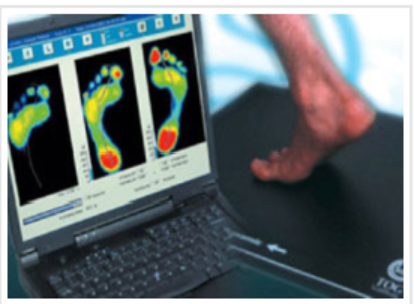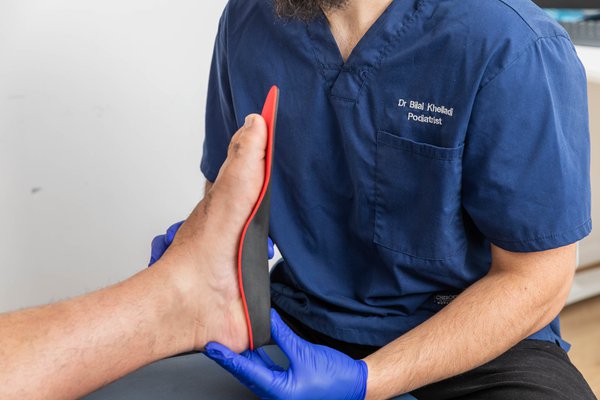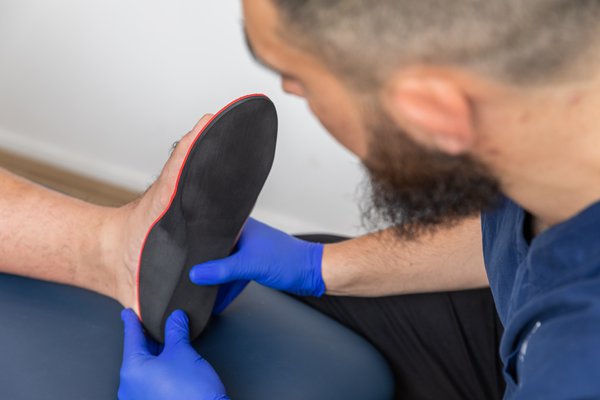Hip Pain Podiatry
help treat your hip pain. Find
comfort again!
What is Hip Pain?
How do feet and foot pain relate to hip pain?
The biomechanics of our feet and legs can significantly influence the position and function of our hips. This can lead to hip pain in various ways. Here are some instances that demonstrate the interconnectedness between foot function and hip pain:
- When there’s an excessive eversion or outward rolling of the heel, this can lead to an over-internal rotation at the top of the femur (the thigh bone that connects with the pelvis to form the hip joint). This misalignment can negatively affect the hip joint and lead to pain.
- Certain conditions like hip bursitis, characterized by inflammation and pain in the hip, can be triggered by poor alignment or instability of the pelvis. By ensuring the feet and legs function properly, the alignment of the pelvis can be improved.
- Hip pain can sometimes be linked to a Leg Length Discrepancy (LLD), a situation where one leg is shorter than the other. This condition can sometimes be seen following hip replacement surgery. LLD can be addressed by podiatric treatment to improve posture and joint alignment.
Additionally, hip pain can result in secondary problems in the feet. For example, pain in the hip related to weak hip muscles (like the gluteus medius) can impact the kinetic chain, affecting other parts of the body. This sequence of events might look like:
- Weakness in the muscles surrounding the hip
- Increased adduction and internal rotation of the femur (thigh bone)
- An increased angle in the knees, creating a “knock-knees” appearance
- Internal rotation of the tibia (shin bone)
- Increased weight transfer to the inner part of the foot, leading to over-pronation
This chain of events resulting in excessive and/or prolonged pronation of the foot can increase the risk of developing other conditions such as medial tibial stress syndrome (commonly known as shin splints) or Achilles tendonitis. Associated knee pain (patellofemoral pain syndrome) can also occur.

Causes of Hip Pain
Numerous conditions can lead to hip pain. Some of these include:
Arthritis: This is one of the most frequent causes of hip pain, especially in older adults. Arthritis leads to inflammation of the hip joint and the breakdown of the cartilage that cushions your hip bones. Types include osteoarthritis, rheumatoid arthritis, and psoriatic arthritis.
Hip Fractures: These are common in older individuals, particularly those with osteoporosis.
Bursitis: Bursae are sacs of liquid found between tissues such as bone, muscles, and tendons. They ease friction from these tissues rubbing together. When bursae get inflamed, they can cause pain.
Tendinitis: Tendons are bands of tissue that connect muscles to bones. Usually caused by repetitive stress from overuse, tendinitis results in inflammation of the tendons.
Hip Labral Tear: This is a rip in the ring of cartilage (labrum) that follows the outside rim of your hip joint socket.
Muscle or Tendon Strain: Repeated activities can put strain on the muscles, tendons, and ligaments that support the hips. When they become inflamed due to overuse, they can cause pain and prevent the hip from working properly.
Hip Impingement: This occurs when the ball and socket of the hip joint don’t fit together properly, which can lead to hip pain and potentially osteoarthritis.

Why Choose Us
Hip Pain Gone
Book online

We Treat Hip Pain

Symptoms of Hip Pain
- Pain in your hip, groin, thigh, or buttock
- Difficulty walking or moving the hip joint
- Swelling and tenderness in the hip region
- A crunching or popping sound when moving the hip
Complications of Hip Pain
- Difficulty walking, leading to a lack of mobility
- Long-term (chronic) pain
- Hip joint deformity
- Development of conditions like arthritis
Preventing Hip Pain
Here are a few ways to help prevent hip pain:
- Maintain a healthy weight to reduce pressure on your hips
- Stay active to keep your joints and muscles strong
- Practice proper techniques when exercising or doing physical work
- Wear the right footwear for support












